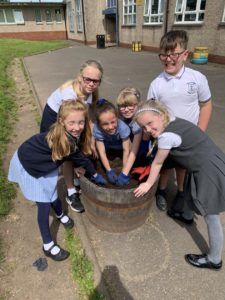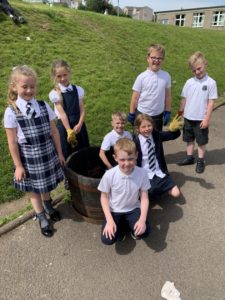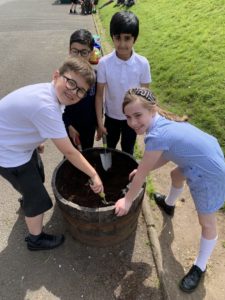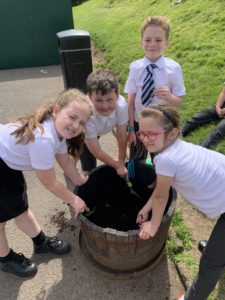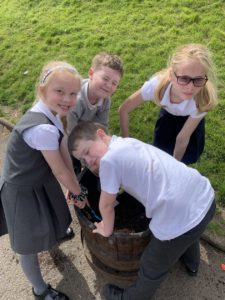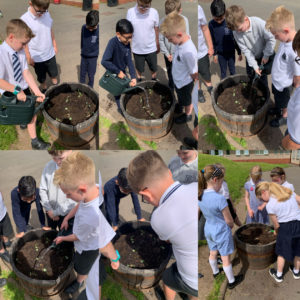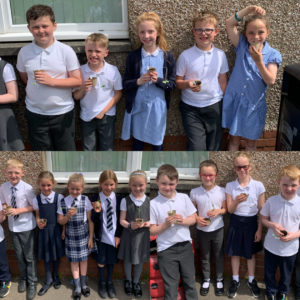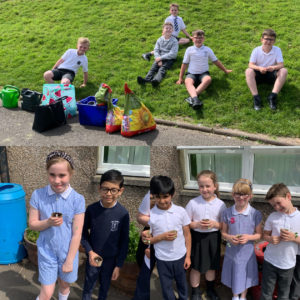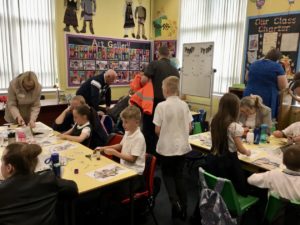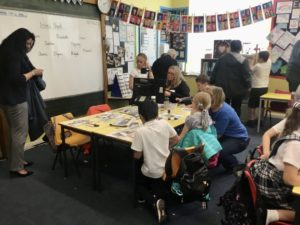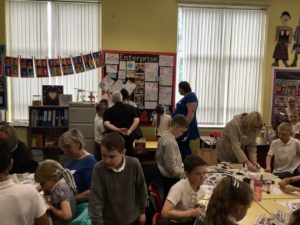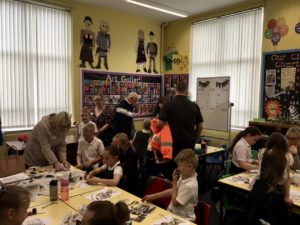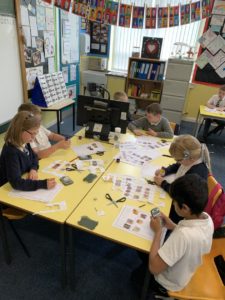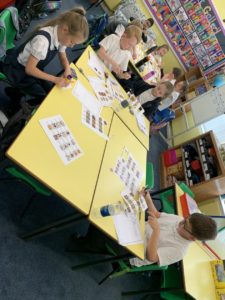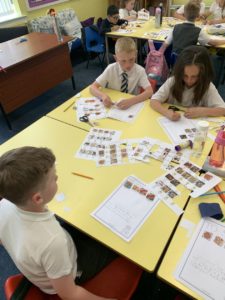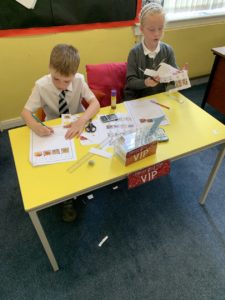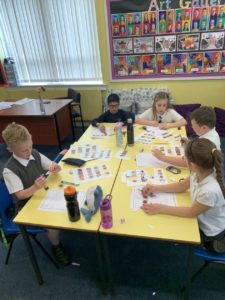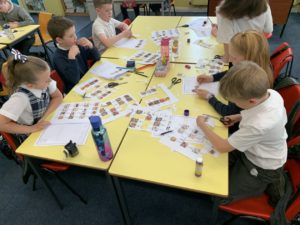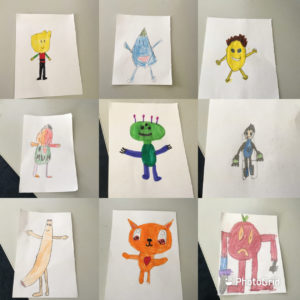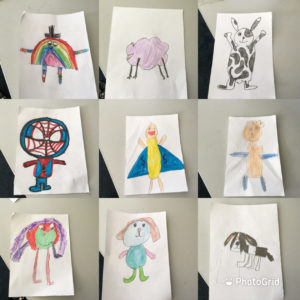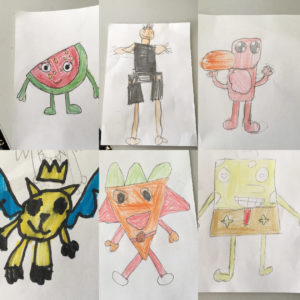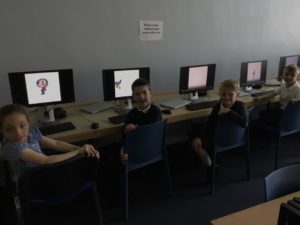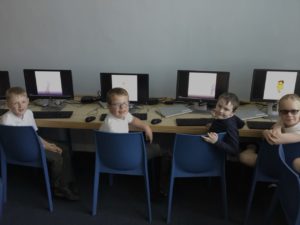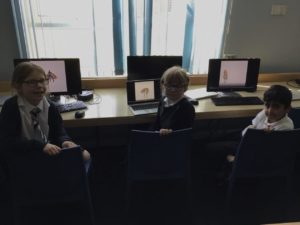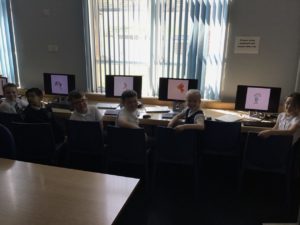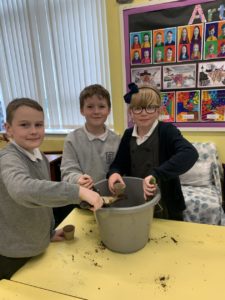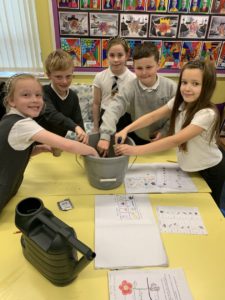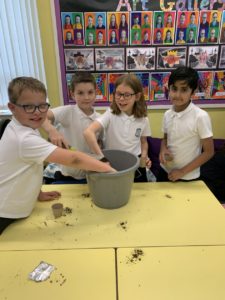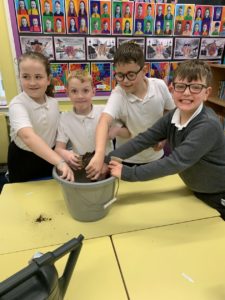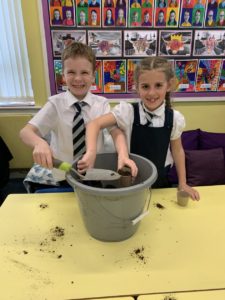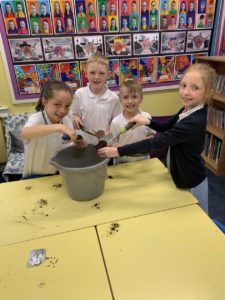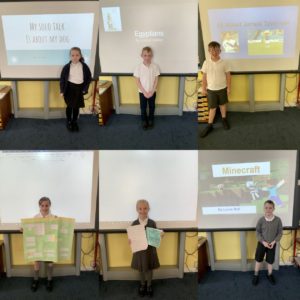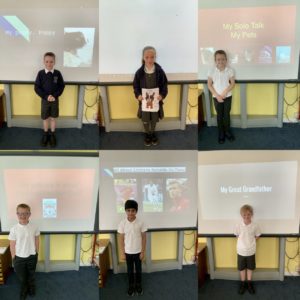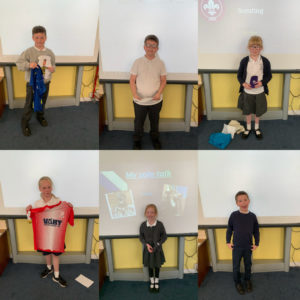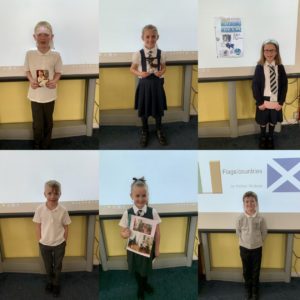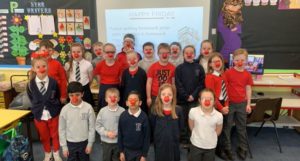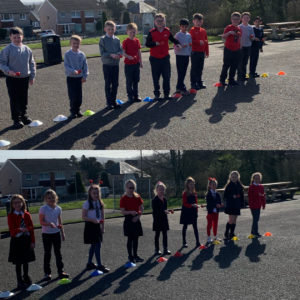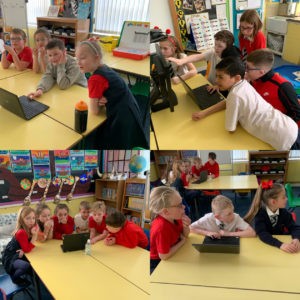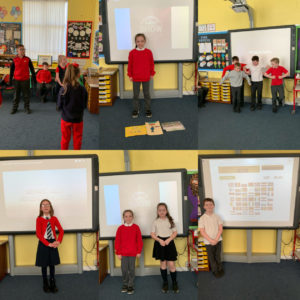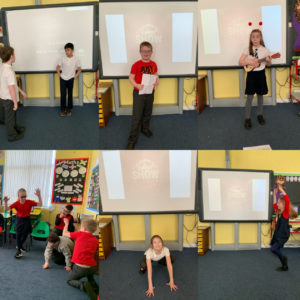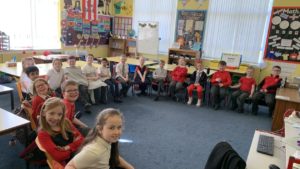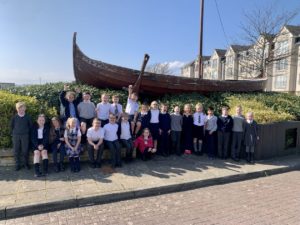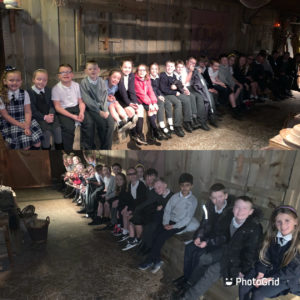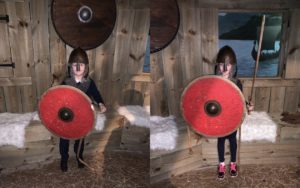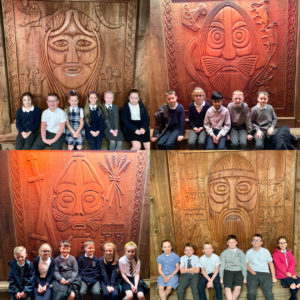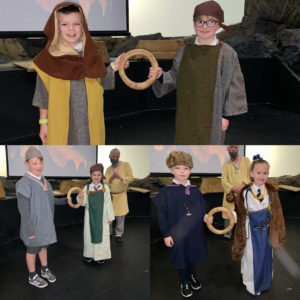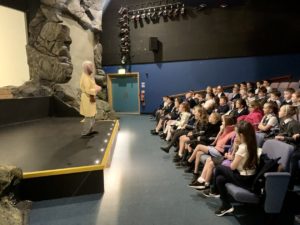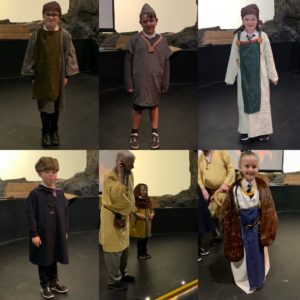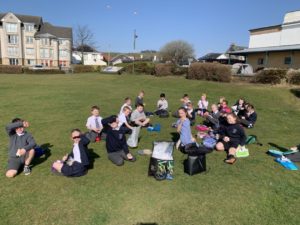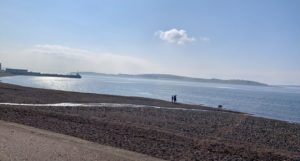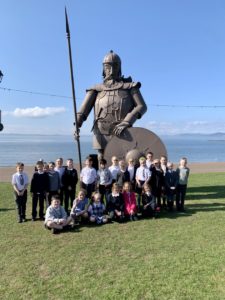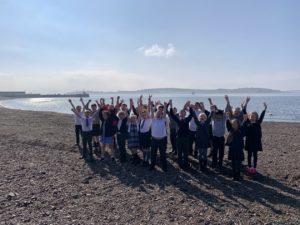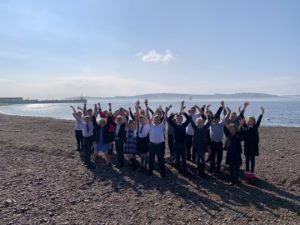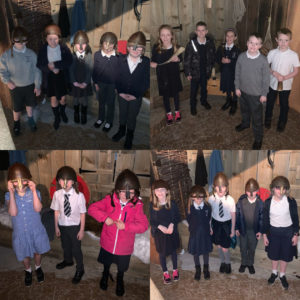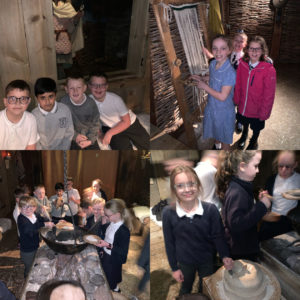Welcome to Primary 5.2
As you will know Primary 5 have moved upstairs to our new classroom and are already having lots of fun while revising areas of the curriculum from last year.
Literacy
We were writing a letter to our Primary 4 teacher Miss Aslam telling her all about her summer and sharing a few things we did. We took part in book tasting, exploring different types of book and discussing our favourites and added some descriptions and reviews to our library books.
In ICT we took a vote on which book we wanted our class novel to be and the winner was… ‘The Unexpected tale of Bastien Bonlivre’.
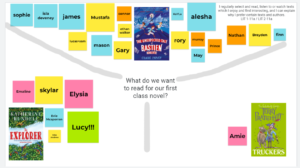
Art
We have been learning about different art techniques, one of our activities was paper marbling called Japanese Suminagashi. We mixed a range of inks with water to create our own marbling designs. We then used this to write our names with a cool background.
Health and Wellbeing
In health and wellbeing we have been discussing our expectations within our class, we have explored the rights that each child has and chosen the most important 6 to displaying them on our class charter. Finally we have been make steps to make our class and school more compassionate and connected.
Finally I look forward to seeing some of Primary 5/2 at the Basketball club which starts Monday the 5th for 4 weeks. As there was a big interest in this club I hope to run another session to insure the majority of pupils who were interested gets a chance to attend.
There will be photos added to the blog as soon as all consent forms for pictures are back. Hope you are all well.
Miss Andrew

